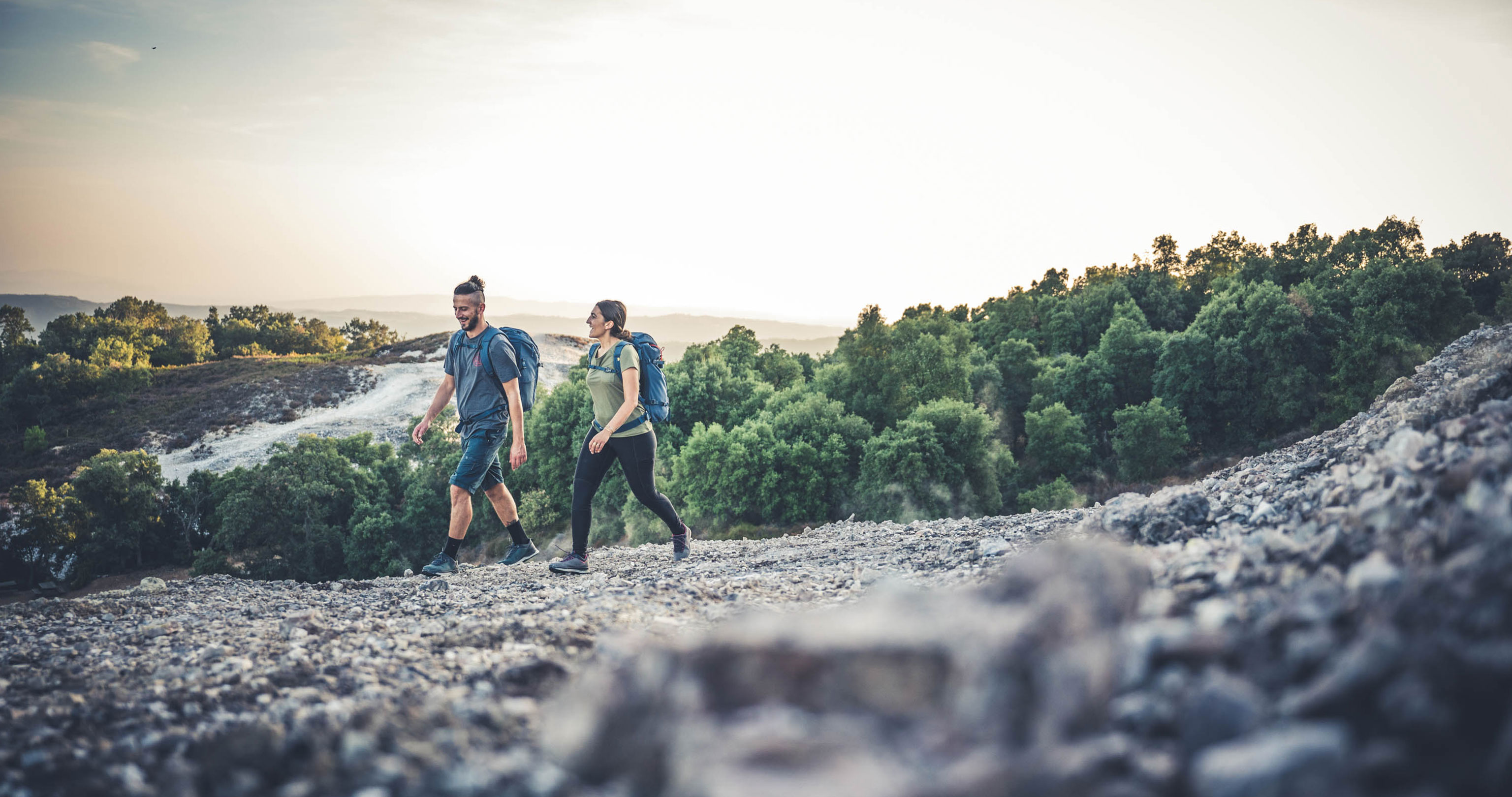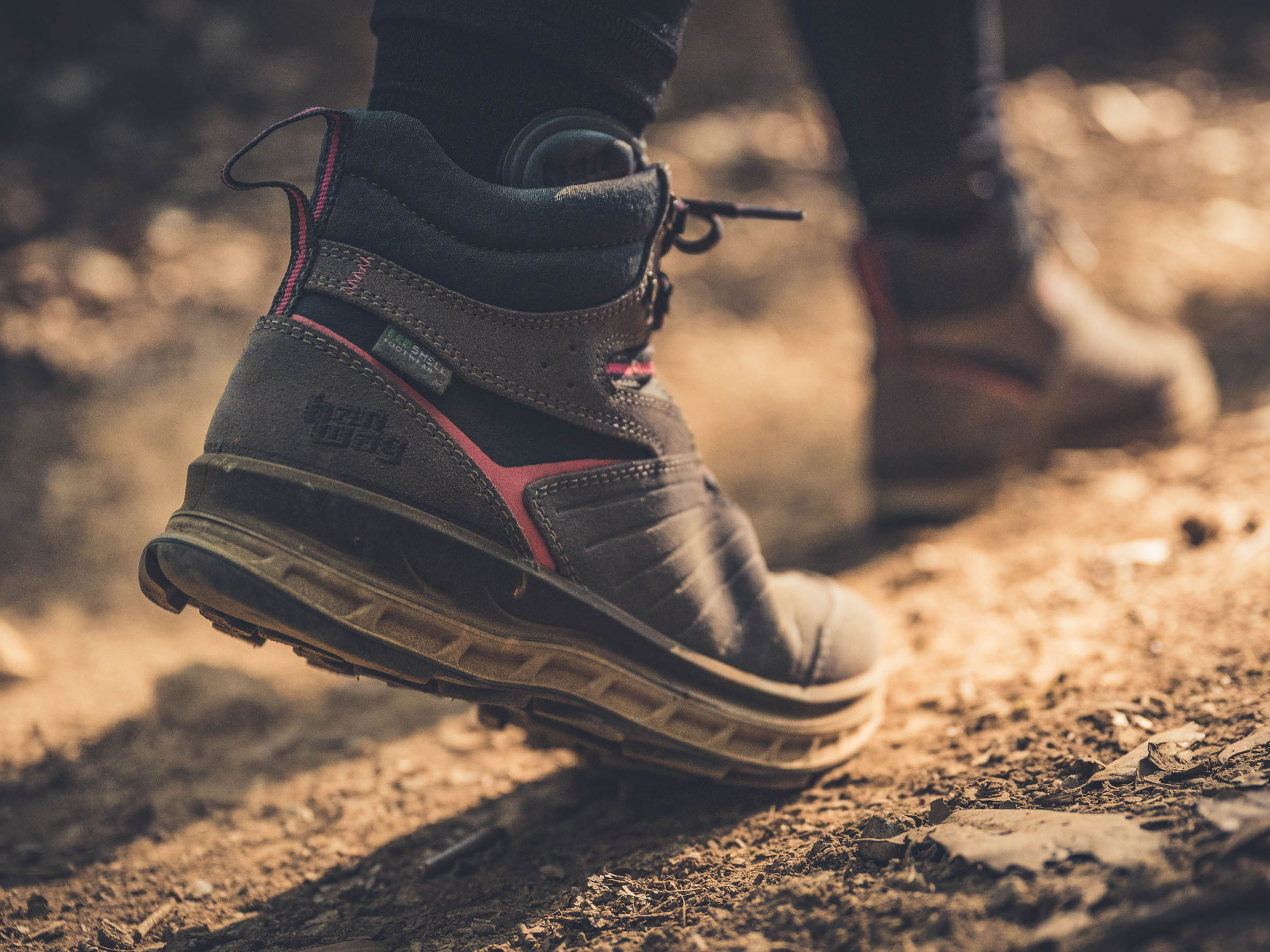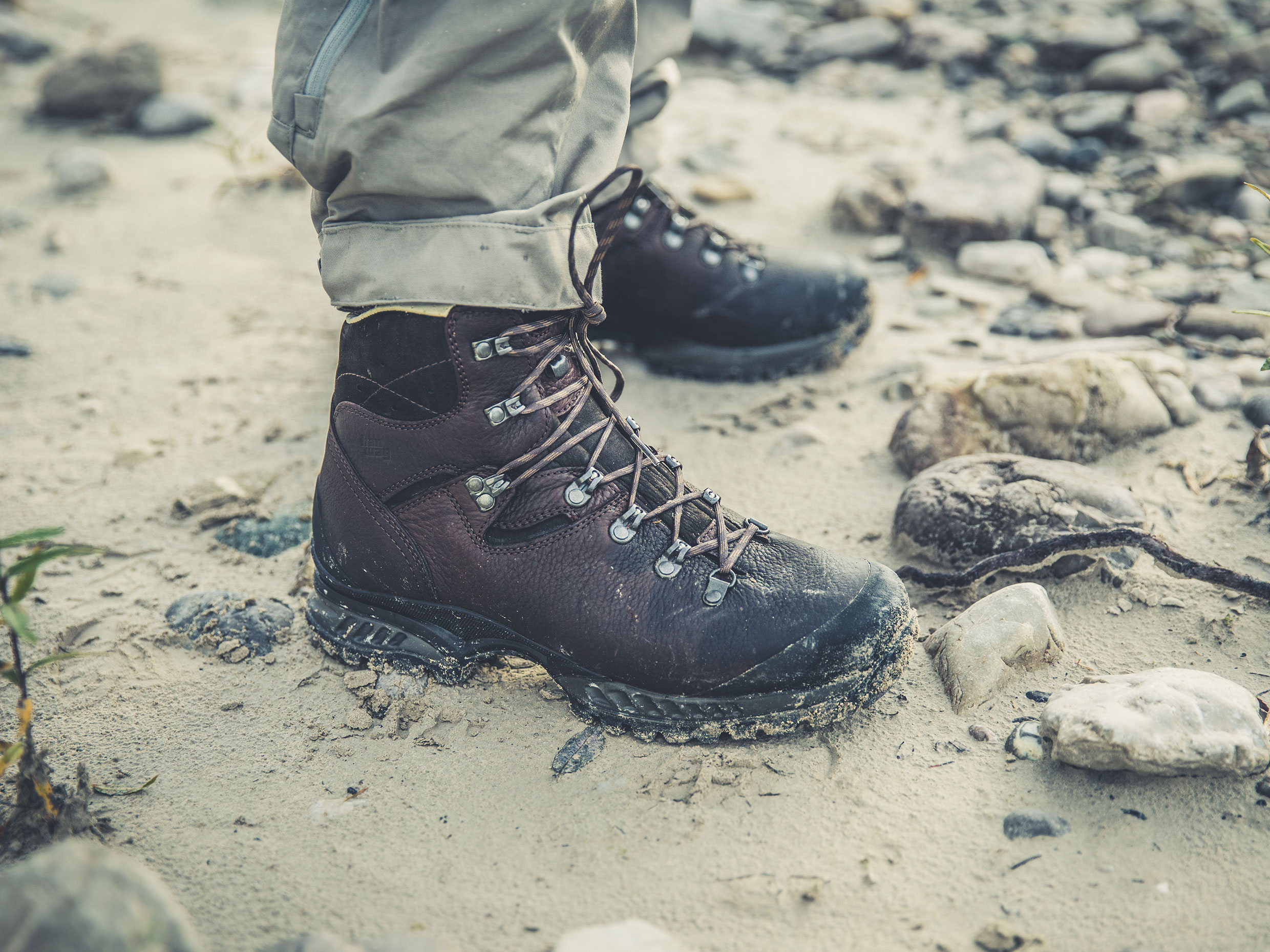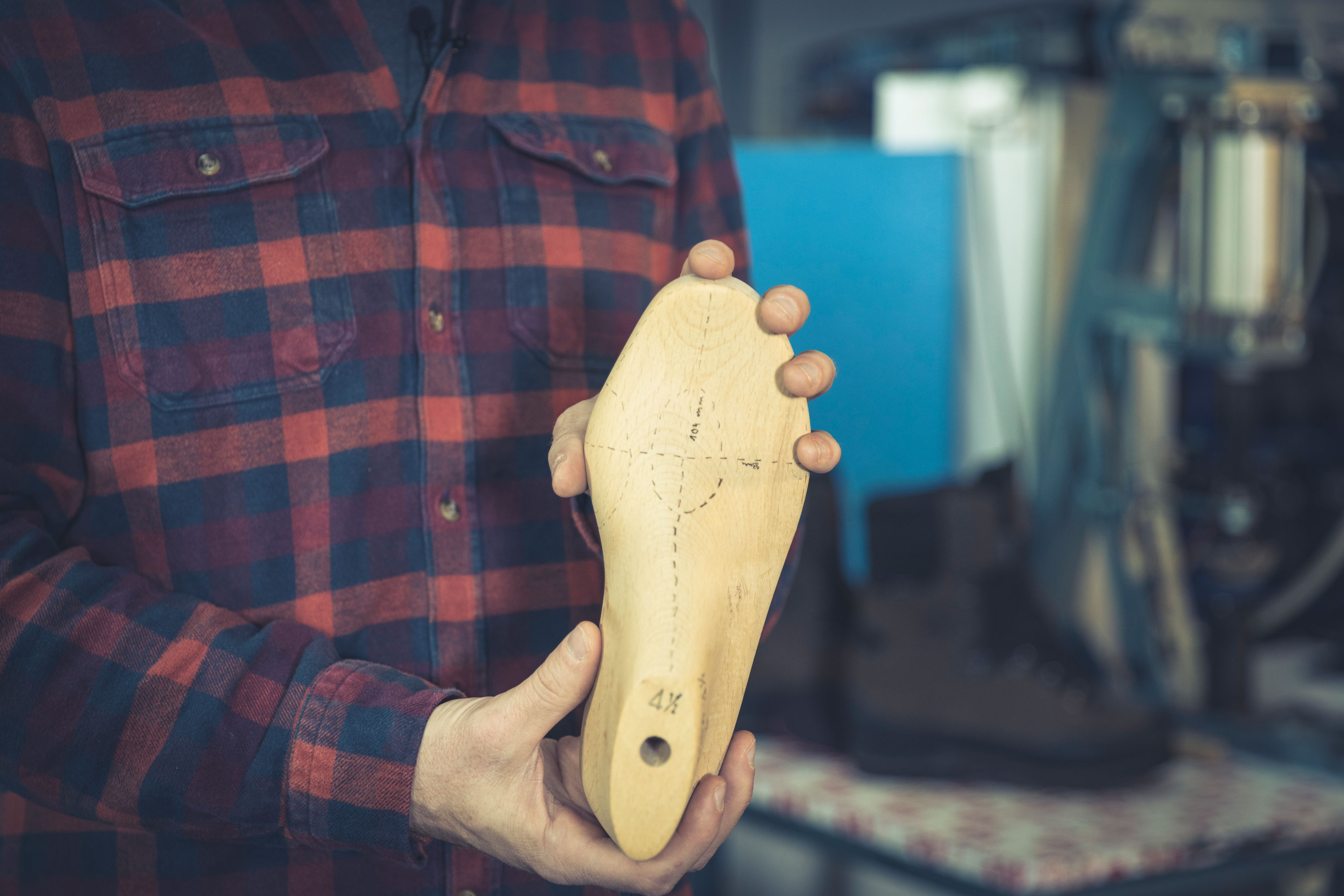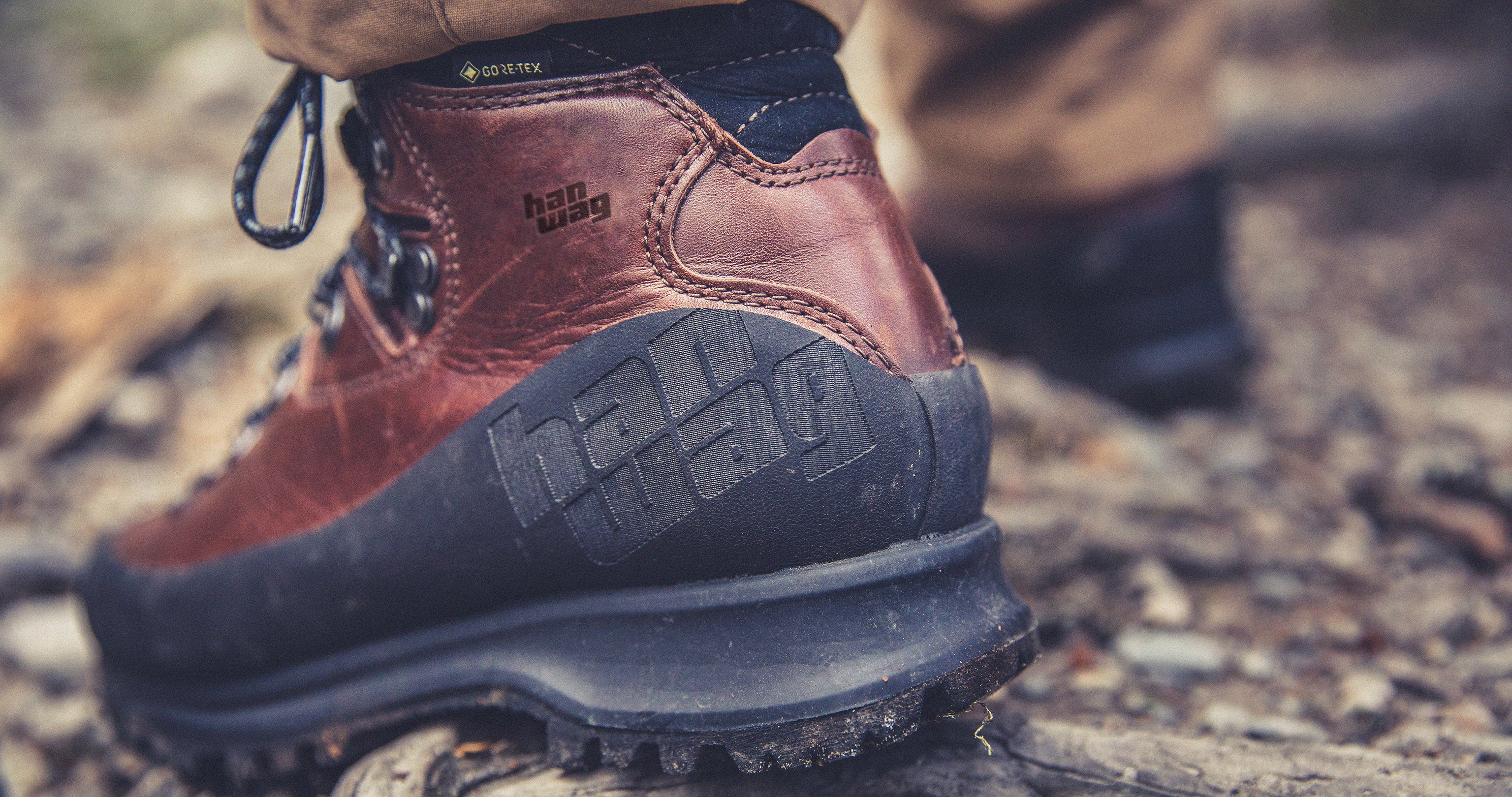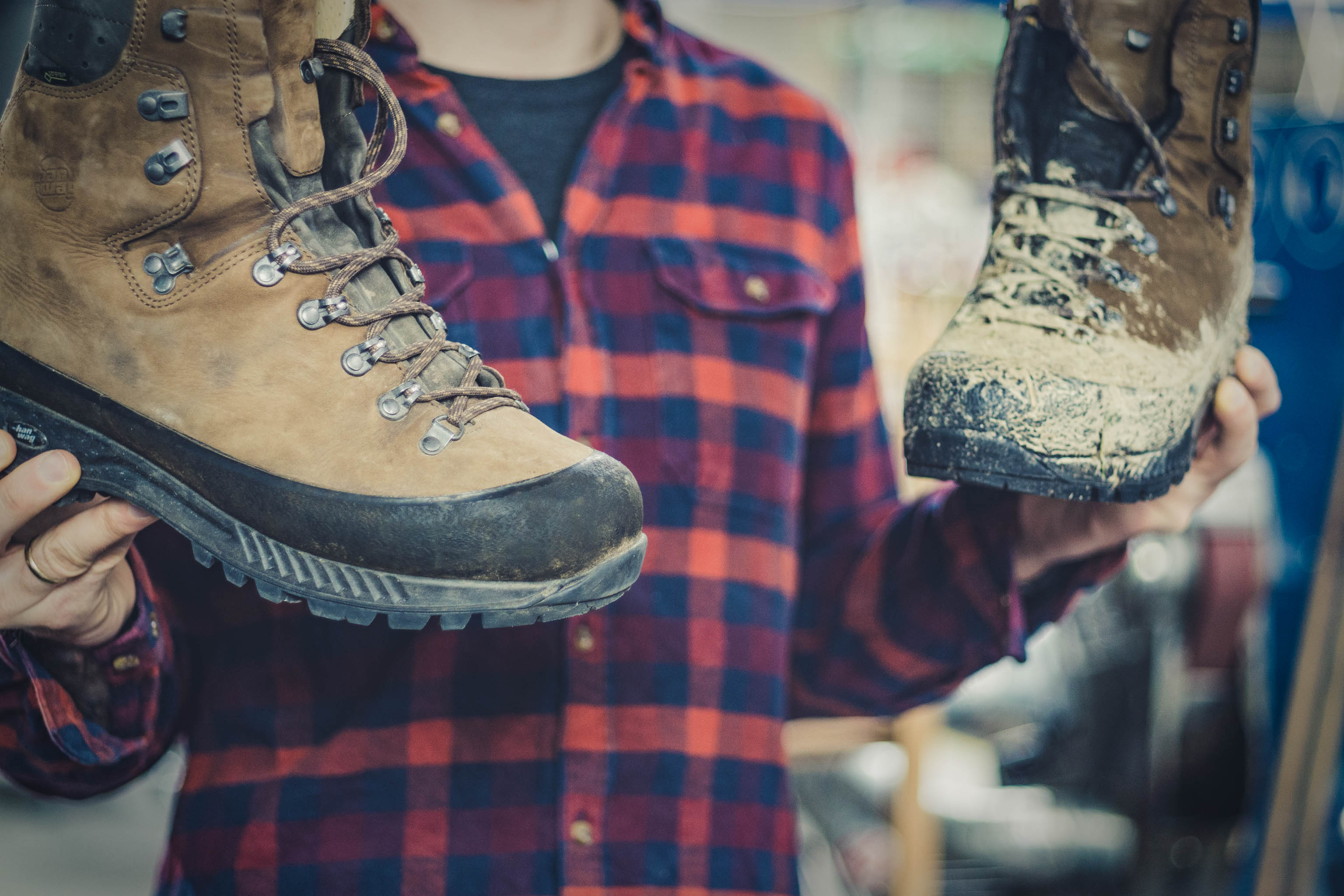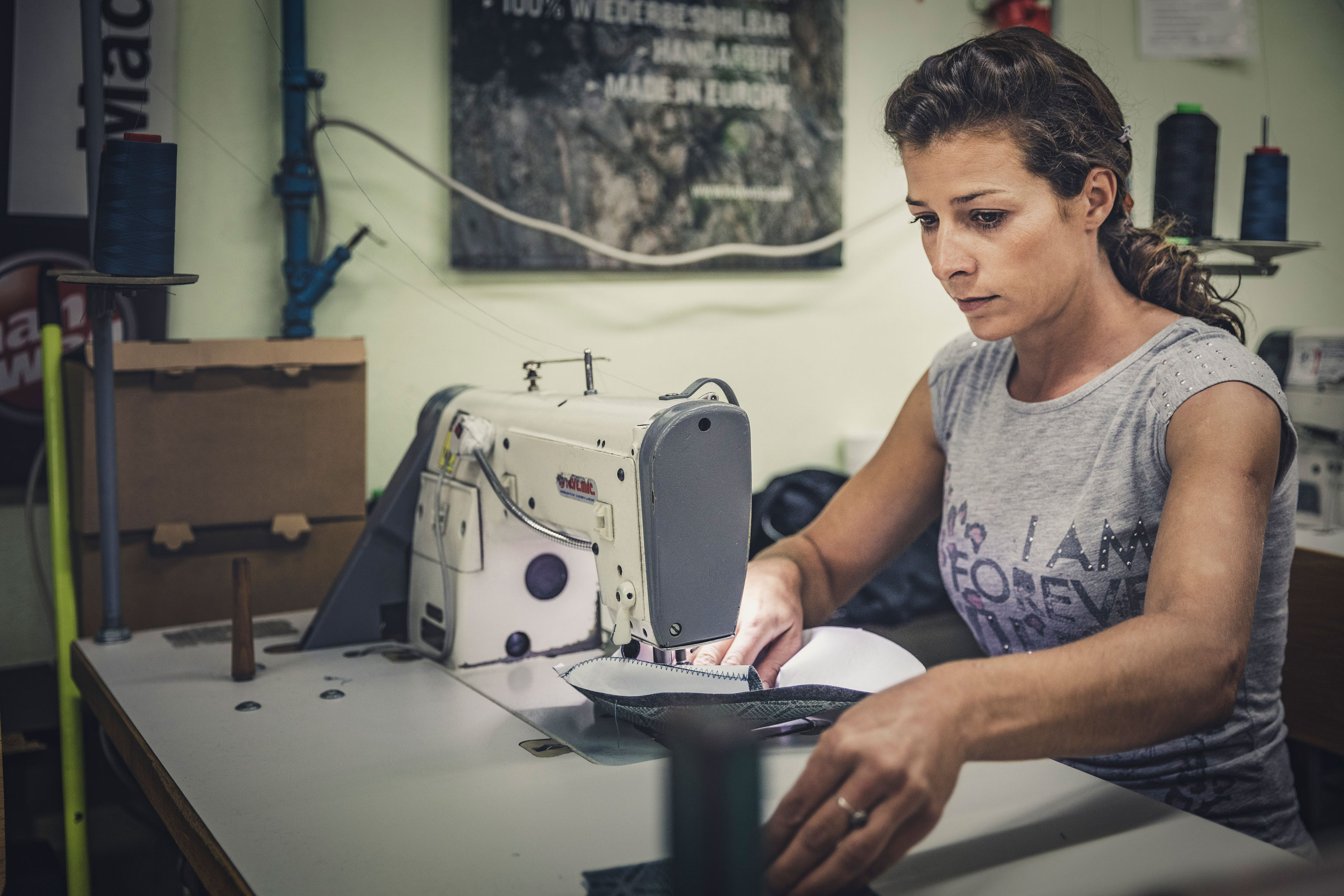Updated on
More and more people want sustainable hiking boots – and that’s great. But sustainability’s a complex issue and there’s lots of things to bear in mind. Here, we’ll be explaining key terms and aspects associated with sustainable hiking boots.
-
Working conditions
Sustainability isn’t just about the planet, but the society we live in. And employees’ working conditions play a key role. In this respect, there’s much that’s wrong at Asian shoe factories in particular. HANWAG only makes its footwear in Europe – either in its own factories, or its partners’, some of whom we’ve been working with for many years.
-
Organic leather
In contrast to organic food, no rules govern when leather can be called organic and there’s no relevant certification either. The same goes for popular labels for ethical and eco-friendly shoes. However, lots of organic leather producers specifically source hides from animals bred on organic farms. For our exceptionally sustainable models like the HANWAG Waxenstein Bio, we use organically certified cowhide. What’s more, the leather is chrome free.
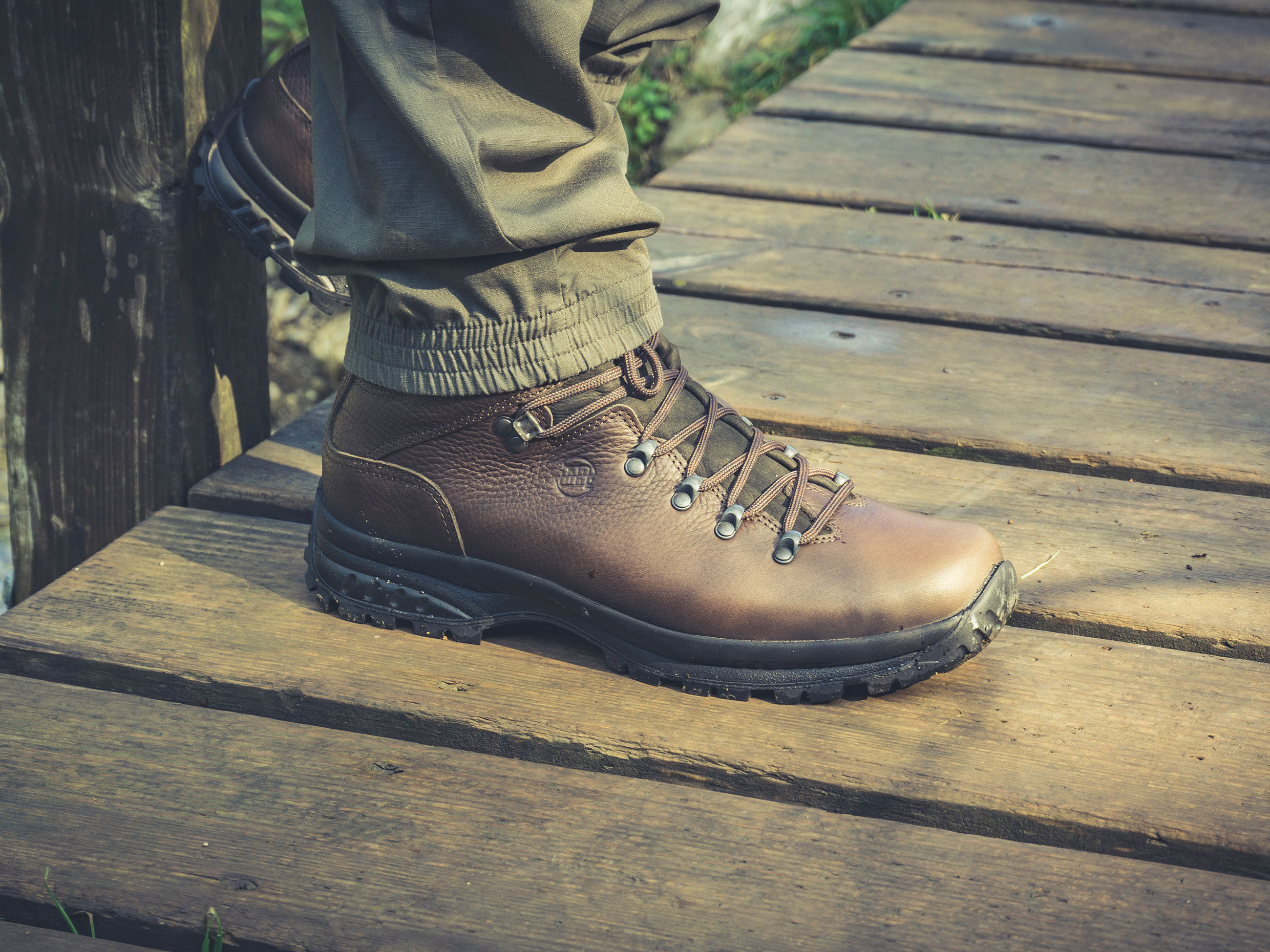
100% organic leather – discover the HANWAG Waxenstein Bio
This comfortable trekking boot is fashioned from a particularly sustainable leather. The upper is made of certified organic leather and chrome free. The same applies to the leather lining. The HANWAG Waxenstein Bio also comes as a lightweight hiking shoe with a low upper.
-
Chrome tanning
Chrome tanning means excellent quality leather, but often has a poor reputation because it’s harmful to the planet and health. But that’s not quite the whole truth. Because chromium III, which our tanneries use, is perfectly safe and occurs in mineral water for instance. Toxic, and therefore prohibited, chromium VI can only occur if something goes wrong during the tanning process with chromium III.
Cases of this happening are, above all, well known from tanneries producing cheap leather in Asia. At HANWAG, we obtain our leather exclusively from European companies that meet very stringent local environmental and health and safety regulations. Nevertheless, we do also use chrome-free leather for the linings in some models because some people are allergic to chrome.
-
Start off on the right foot
What can you do to ensure your footwear is as sustainable as possible? First of all, buy quality. And yes, you might have to dig slightly deeper into your pocket. But your feet, shoe-factory workers and the environment will thank you. Find out where and how the footwear’s produced and what it’s made of. This is the only way of spotting whether your hiking boots are sustainable.
Once you’ve picked your footwear, you can keep your eco footprint small by wearing it for a long time. To make them last as long as possible, you should clean your hiking or mountain boots regularly and have them resoled to extend their lifespan.
-
Emissions
Without protecting the planet, sustainability’s impossible. For footwear to be sustainable, eco-friendly walking boots need to cut climate-harming emissions along the whole production chain. One of the reasons why HANWAG produces its footwear in Europe is to cut down on unnecessary shipping. Nearly all the materials used to make our hiking or mountain boots come from Europe. What’s more, we also source from suppliers who, like us, minimize emissions occurring from production and shipping.
-
Linings
For many of the HANWAG models, customers can choose between a fabric lining with a waterproof membrane and a leather one. We use chrome-free leather for the insoles in some models because some people are allergic to chrome. What’s more, a leather lining is very hardwearing and therefore boosts sustainability.
-
Tanning
Left untreated, animal hides would decompose quickly. Animal hides are tanned to make them last and transform them into quality leather. The tanners then process the animal hides using a variety of mechanical and chemical methods to produce leathers in different thicknesses, textures and colours. In the tannery, the leather is treated and becomes breathable and water repellent.
Watch the video: Visiting the Heinen leather factory (English subtitles available)
-
Long-lasting footwear
The most sustainable shoe is one that lasts and lasts. As long as someone’s wearing it, nobody needs to worry how to dispose of it. And if a new product’s not required, no climate-harming emissions are produced or resources wasted.
This is why it’s our top priority to make hiking and trekking boots that last. Durability is also a reason why we choose leather. This natural product isn’t just ideal for outdoor footwear, if cared for properly, it’s a gift that keeps on giving.
-
Innovation
Right up until today, high-quality hiking and mountain boots are chiefly handmade. At the same time, many manufacturers and suppliers are forging ahead with innovative solutions for more sustainability. At HANWAG, we liaise closely with our partners in this respect. Examples include solar panels, for instance at our partner factory in Croatia, to the PFC-free EcoShell membrane and soles with a high proportion of recycled materials.
-
Annual footwear sales
According to figures issued by the Federal Ministry of Economics and Technology, around 400 million pairs of shoes are sold in bricks and mortar or online shops in Germany annually. In other words, every German purchases almost five pairs of shoes a year. Is that necessary and sustainable? Or have shoes too often become a short-lived throw-away item? Tell us what you think in the comments below.
-
Artificial leather
Genuine leather comes from animal hides. Wouldn’t it be more animal friendly, and therefore more sustainable, to use artificial leather? That’s a question we’re often asked. However, there are three reasons why not.
- Firstly, no animal has to die for shoe leather alone. Because the animal hides our tanneries use are a by-product of the domestic meat and dairy industry.
- Secondly, artificial leather can’t even approach the functional qualities of genuine leather. Because artificial leather is primarily made from plastics, which are not as breathable as real leather.
- And thirdly, from an ecological standpoint, artificial leather doesn’t have a clean slate either. On the one hand, it’s not as hard wearing as real leather. On the other hand, artificial leather requires petroleum, a fossil fuel, because recycled plastics aren’t always used. What’s more, artificial leathers can emit critical substances like plasticisers and are therefore tricky to dispose of too.
-
Leather
Leather has excellent functional characteristics, which are vital for outdoor footwear. It’s thick leather that gives feet support and stability when people are out on the trail. And thanks to its breathability, leather also provides a pleasant foot climate.
Sustainability arguments are also in favour of leather. Consequently, we only use leather from animal hides that are a by-product of the domestic meat and dairy industry. Our tanneries in Germany, South Tyrol and Croatia comply with the stringent environmental, climate and health and safety regulations that prevail here. And, of course, leather is a very robust material and therefore one that lasts. When cared for well, a hiking boot can last for ages, while lots of plastic footwear needs to be thrown away after a very short space of time.
-
Membranes
ots of hiking or mountain boots have waterproof membranes. Over the past few years, lots of developments in this product segment have made huge strides towards more sustainability. For instance, in our EcoShell we use a PU-based membrane without any problematic fluorocarbons.
-
NGOs
Lots of NGOs are addressing sustainability in the clothing and footwear industry. For instance, HANWAG is a member of the Fair Labor Association (FLA). The association’s goal is to improve labour rights and working conditions around the world.
-
Uppers
The upper is the material on the outside of the boot. For everyday shoes where fashion is prioritised over functional requirements, manufacturers can pick a variety of sustainable materials, such as organic cotton or artificial leather based on plant waste.
However, outdoor footwear needs to be very functional and hard wearing at the same time. It should also provide stability to stop feet getting injured and wet. At the same time, the footwear needs to be breathable to prevent feet from getting too hot and blisters from forming due to moisture build-up.
It’s not easy to find functional, but sustainable and long-lasting materials to do the job. Which is why there’s no way around responsibly produced leather for the foreseeable future. But shoe manufacturers and their suppliers are pulling out all the stops to produce innovative solutions and reconcile functionality with sustainability in the best possible way.
-
Prices
Sustainable materials are usually more expensive than those with a large ecological footprint. People-friendly working conditions usually mean higher costs than those caused by irresponsible cheap production methods. Which is why we need to be clear that sustainability comes at a price, even in the case of outdoor footwear. But fans of sustainable products will enjoy wearing their shoes for a long time and have a clear conscience at the same time.
-
Quality
Quality is one of the keys to sustainability. Because only customers happy with their purchase will enjoy wearing their boots and make them last by caring for them properly. In other words, anyone who chooses good quality footwear will reap the rewards.
-
Repairing and recycling
Ideally, we should wear boots for as long as possible to put off wondering how to dispose of or recycle them. A high-quality hiking boot doesn’t need to be thrown away if it’s in a sorry-looking state. On the contrary, our repair service can repair and recondition boots for you to wear again afterwards. (You can reach the HANWAG customer service team here)
And recycling is playing an ever-important role in the footwear industry too. The process starts during leather production. For example, our longstanding partner, the Heinen tannery, recycles 97% of the by-products from its Terracare leather in order to make biogas, compost, small leather items or gelatine. Some synthetic components in footwear can also be made of recycled material. For instance, some of our models’ shoelaces are made of 100% recycled polyester.
-
Labels
There is no one recognised label to indicate ethical or very sustainable footwear. Ultimately, you need to look at how a footwear company produces its items and what materials it uses. Some manufacturers provide quality labels for materials. For its Terracare leather, the Heinen tannery guarantees transparency when it comes to the source of its raw materials and that its auxiliary materials are clean. But it also confirms that it consumes less water and produces lower carbon emissions.
Our second largest supplier, Perwanger, from South Tyrol, has been certified by an independent body and therefore has the Leather Standard Oeko-Tex label. This quality label guarantees that Perwanger leather is free of harmful substances.
And before we forget, our laces aren’t just hard wearing, they’re also made exclusively in Germany.
-
Shipping routes
Almost 90 percent of all shoes are produced in Asia and then shipped worldwide. This causes huge emissions, which exacerbate global warming. “We don’t want our boots shipped further than the distance wearers walk,” says Stefan Jerg, HANWAG’s head of production. All HANWAG boots are made in Europe. This minimises shipping distances and prevents emissions that are harmful to the climate.
Watch the video: How the professionals resole shoes (English subtitles available)
-
Protecting the great outdoors
It’s sensible to ensure that hiking and mountaineering equipment is as sustainable as possible. But this isn’t our only responsibility. It’s equally as crucial to treat nature respectfully – perhaps by dispensing with the car to reach destinations and not leaving any rubbish behind. The Schweizer Alpen Club gives important tips on sustainable hiking.
-
Vegan hiking boots
A vegan shoe is only classed as vegan if it’s not made of any animal products. In other words, without real leather, animal wool and glue that’s made from slaughterhouse waste or milk protein.
As usual, there are lots of aspects that need to be weighed up with vegan shoes too. Some non-animal-based materials, such as artificial leather, don’t meet the functional requirements we place on our outdoor footwear. Which is why we don’t believe it’s an alternative to genuine leather. What’s more, a non-animal-based material or product isn’t automatically more sustainable. Because artificial leather and synthetics also produce emissions during production and leave a carbon footprint behind.
-
Resoling
When cared for properly, a hiking or trekking boot can last for decades. Because the upper is made of leather or very hard-wearing synthetic fabrics. The outsole is the only part of the shoe subject to wear and tear. It inevitably wears out and loses its tread. What’s more, the sole ages naturally and can detach itself from footwear that has been in a basement for long periods of time. This process is called hydrolysis. (–> How to spot and prevent hydrolysis)
The majority of HANWAG models can be resoled. The shoe is given back the grip and traction it had on day one. At the same time, people can continue to wear a well-worn-in shoe. And their feet will thank them. But that’s not the only benefit. If it’s possible to resole hiking boots, this makes them more sustainable. (–> All about resoling)
By the way, as a result of our hiking boots resole service, we’re left with more than 15,000 pairs of old shoe soles every year. We have these industrially recycled.
-
Cross functionality
Cross functionality is when products can be used for several areas. Footwear’s more sustainable if you might just need one pair instead of several pairs.
This idea played a role in the development of our new HANWAG Blueridge. We deliberately call it a multi-functional boot. Because the boot’s ideal for walks, easy hikes or tours in low-range mountains or the Alps.
-
Yak leather
A particularly long-lasting leather comes from yaks, a species of cattle common in Asia. We use yak hides from Mongolia for our yak leather footwear like the HANWAG Lhasa. These are finished by the Heinen tannery in Germany in compliance with all the national sustainability standards. (–> More about yak leather)
-
Double-stitching and cemented constructions
The double-stitching and cementing construction are used to make very high-quality shoes. They guarantee that shoes fit well and keep their shape. Double-stitched and cemented shoes are exceptionally sustainable because they last a long time and can be resoled. The majority of HANWAG boots are either double-stitched or cemented.

